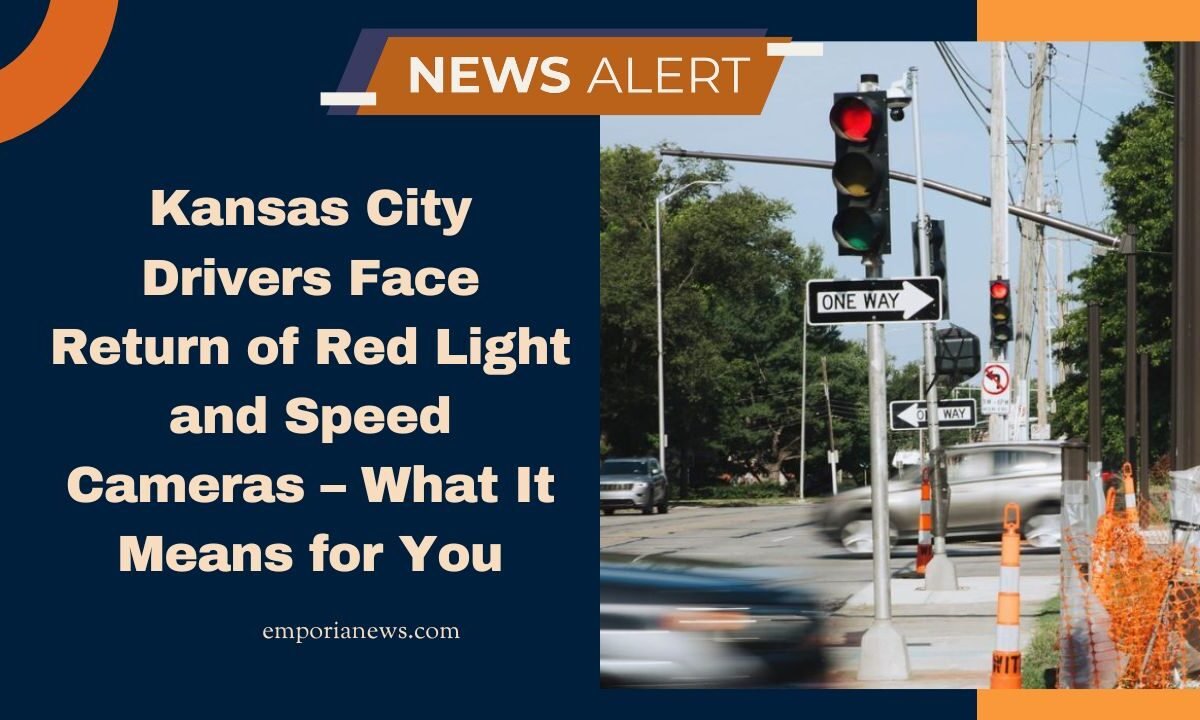Kansas City, Missouri, is preparing to bring back automated traffic enforcement cameras—including red light and speed cameras—nearly a decade after they were discontinued.
The decision, made by the City Council with strong backing, aims to curb reckless driving, reduce traffic fatalities, and improve overall road safety.
Here’s everything you need to know about how the cameras will work, timelines, costs, concerns, and legal safeguards.
What’s Changing: Key Facts and Figures
| Detail | Information |
|---|---|
| Current Status | City Council has approved an ordinance to re-install red light and speed cameras. Pending final approval by the Police Board of Commissioners. |
| Legal Background | Cameras were discontinued in 2013 following a Missouri Court of Appeals decision; older systems only captured license plates, not clear driver identification. New systems must capture the driver’s face. |
| Ordinance Vote | Passed by Kansas City Council with a 10-1 vote. |
| Ticketing & Identification | A ticket will only be mailed if the image of the driver can be matched with the vehicle owner via state driver’s license/photo ID. |
| Fine Amounts | Potential fines could go as high as $250 for red-light camera violations. |
| Allocation of Funds | Revenue from fines will go to the “Vision Zero” fund and other traffic safety efforts rather than general city revenue. |
| Public Awareness & Warning Period | Once locations are chosen, warning signs will be posted at intersections. There will be a three-month public awareness campaign before cameras become active. |
| Expected Timeline | Cameras to be installed after all approvals; law enforcement expects deployment to begin in early to spring 2026. |
| Geographic Focus | Likely to be in districts with high crash and traffic fatality rates (e.g. Third and Fifth Districts). |
| Purpose Emphasis | Focus is stated as enforcement for traffic safety, not revenue-generation. Mayor and Council emphasize reducing crashes and policing gaps. |
Why They’re Returning Now
- Technological Advances: New camera systems can capture both the license plate and a clear view of the driver’s face, satisfying legal requirements.
- Public Safety Concerns: Traffic fatalities and serious crashes have been increasing in certain districts. Automated enforcement is seen as one tool to encourage safer driving.
- Legal Alignment: The 2013 legal issues stemmed from the inability to identify the driver. With better imaging, the system now meets court expectations
How It Will Work: Enforcement & Protections
- Identification Requirement: For a traffic citation to be issued, the driver in the photo must match the state driver’s license owner. No fine without that match.
- Warnings & Signage: Intersections under camera enforcement will have warning signs before cameras activate.
- Public Outreach: A three-month awareness phase will inform the public where cameras will be and how the rules will be enforced.
- Fund Allocation: Fines go to traffic safety programs (Vision Zero, etc.), not into general municipal budget.
Concerns, Criticism & Support
- Privacy & Surveillance Fears: Some residents worry about constant monitoring and possible misuse of images.
- Fine Size Debate: The proposed $250 fine has raised objections from citizens who believe it’s too high.
- Fairness & Equity: Concerns about where cameras will be placed, and whether certain neighborhoods will be targeted disproportionately. Warning signs and public input are intended to address this.
The return of red light and speed cameras in Kansas City marks a major shift in how traffic violations will be enforced.
With better technology, legal safeguards, clear identification requirements, and an emphasis on public safety rather than revenue, the city aims to reduce reckless driving and worsen traffic outcomes.
The success of the program will hinge on transparency, fairness, and how well citizens are informed ahead of the system going live in 2026.



